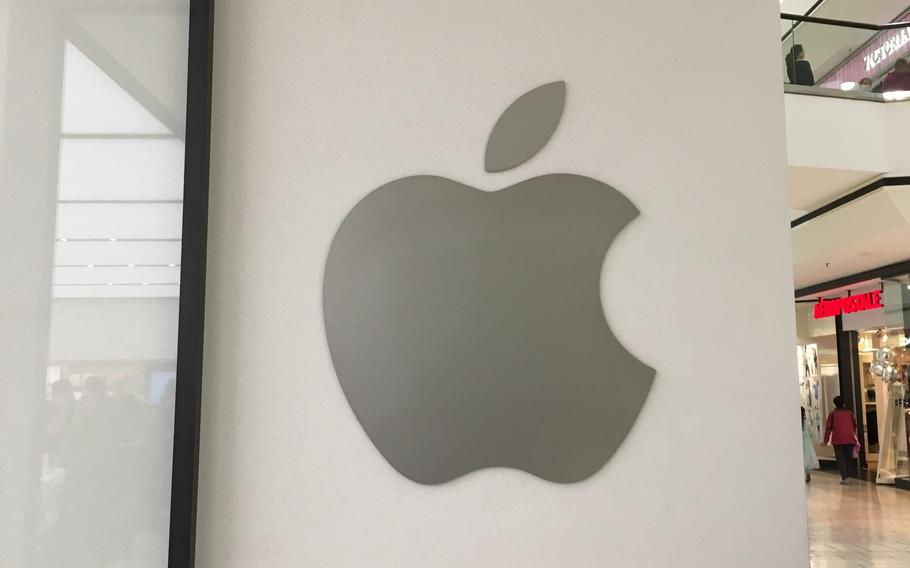
A logo for Apple. (Wikimedia Commons)
Apple Inc. worked with Chinese automaker BYD Co. for years as part of its now-canceled car project, developing long-range batteries that helped lay the groundwork for technology used today, according to people familiar with the situation.
Apple and the Shenzhen-based company teamed up around 2017 to build a battery system using lithium iron phosphate cells, said the people, who asked not to be identified because the effort hasn’t been disclosed. The technology was designed to be longer-range and safer than typical electric-vehicle batteries at the time.
Though Apple doesn’t own any of the technology used in BYD’s current Blade batteries, the partnership shows just how far the iPhone maker went in its efforts to produce a car. The tech titan spent roughly $1 billion a year over the past decade on the vehicle project - often seen as one of the company’s “next big things” - before scrapping it in February.
The technology that Apple developed with BYD would have been highly customized for the once-planned vehicle, according to the people. As part of the secret partnership, Apple engineers brought expertise in advanced battery packs and heat management, they said. BYD contributed manufacturing know-how and advancements using lithium iron phosphate cells - better known as LFP.
Spokespeople for Apple and BYD declined to comment on the joint battery work. But BYD said in an emailed statement that “the concept for the Blade battery originated with BYD engineers, who independently developed this LFP Blade battery. BYD holds complete property rights and patent rights for the Blade battery.”
Today, BYD’s entire car lineup is powered by the Blade system, which uses a battery pack design that people involved in its development say was informed by lessons from the Apple work.
The seeds of Apple’s BYD collaboration were planted about a decade ago, when the US company was seeking core technologies for its car. BYD engineers previewed early versions of the Blade battery to Apple executives, who admired the technology’s safety and energy storage capabilities. Apple ultimately sought customizations that could enhance the range of an EV, the people said.
At the time, Cupertino, California-based Apple had already been working on several different batteries, using elements like nickel and alkaline. It had also been investing millions of dollars in battery pack design and engineering to squeeze in as many cells as possible. The two companies sought to combine the separate pack and cell efforts to produce a safe, long-range battery system for the Apple vehicle.
On the Apple side, the tie-up was led by Alexander Hitzinger, a former senior Volkswagen AG and Porsche executive who oversaw product design for the car project from 2016 to 2019. The company also had enlisted Mujeeb Ijaz, a veteran of the failed American battery startup A123 Systems LLC who worked at Apple from 2014 to 2020. Ijaz oversaw a team of about 50 battery engineers working on the project. His counterpart at BYD was Michael He, vice president of the company’s battery business.
The Blade is now a signature feature in BYD cars - and a major selling point. The company used its improved range, relative safety and lower cost to generate sales of 3 million electric and hybrid vehicles in 2023, up from 179,054 three years earlier.
It’s now the biggest automaker in China by sales and briefly surpassed Tesla Inc. to become the top seller of EVs globally. BYD founder and Chairman Wang Chuanfu, a battery engineer himself, is a billionaire.
Despite years of working with BYD, Apple backed away from the partnership and considered systems from other battery makers, the people said. The overall car project suffered numerous delays, and the economics of the EV business eventually proved too daunting.
When Apple canceled the car project, it marked a rare high-profile failure for the world’s most valuable company. But the decade-long endeavor did prove useful in some ways. Beyond the battery insights gleaned from the effort, it helped with the development of products such as the Vision Pro headset and the Neural Engine AI processor now present in most Apple devices. The work also has contributed to the company’s nascent push into robotics.
With assistance from Danny Lee.